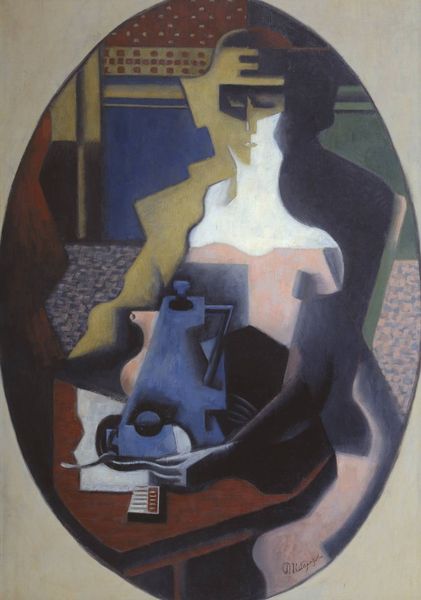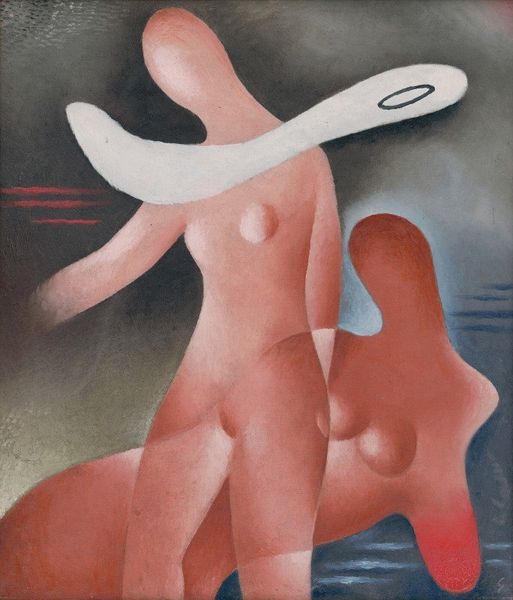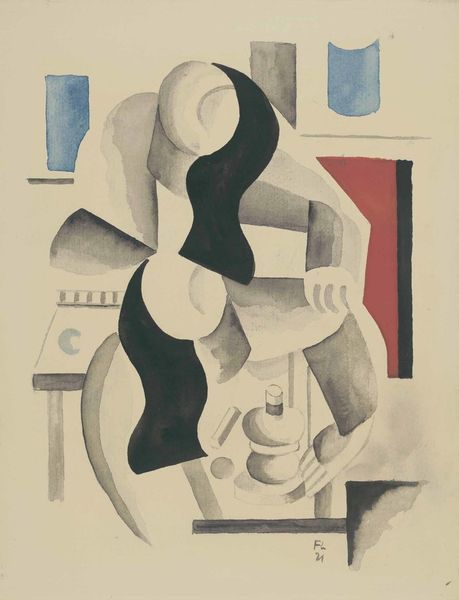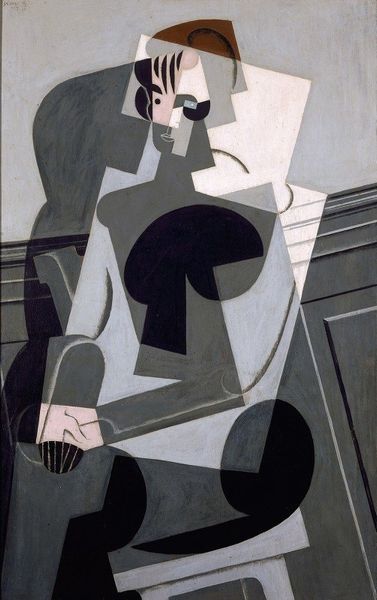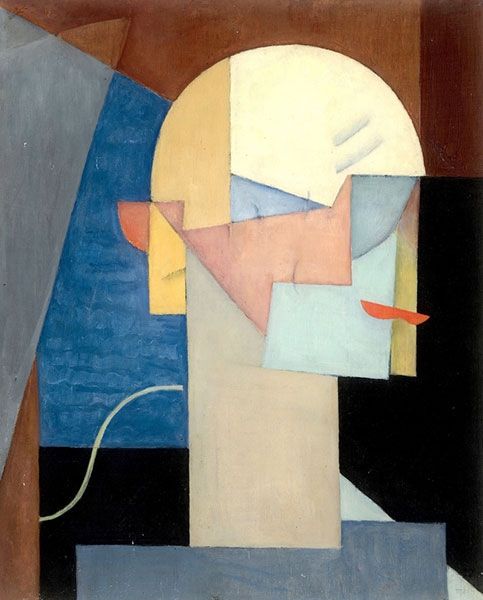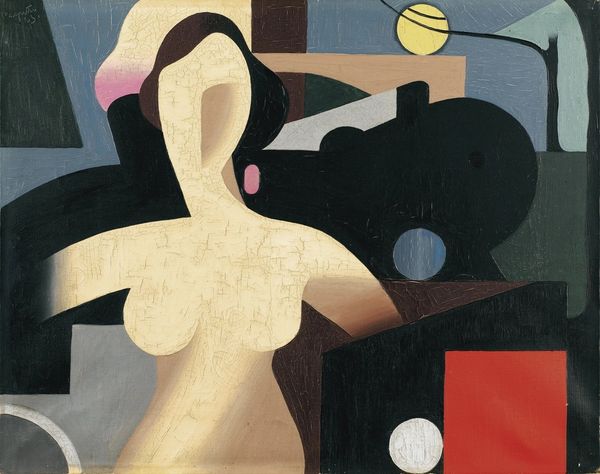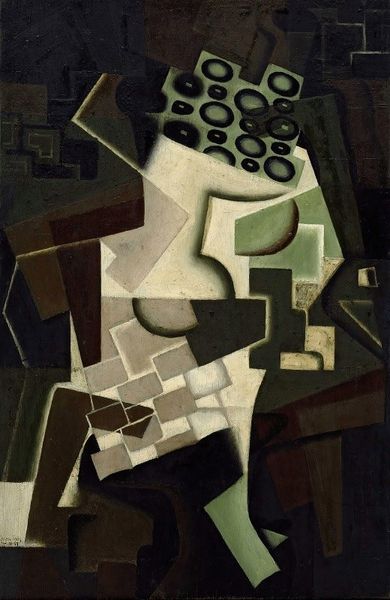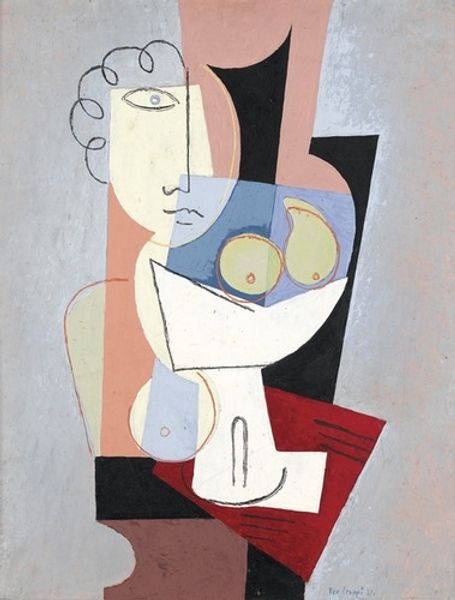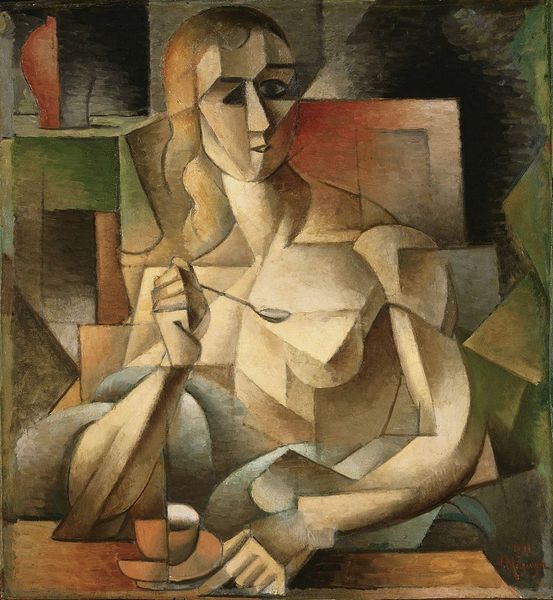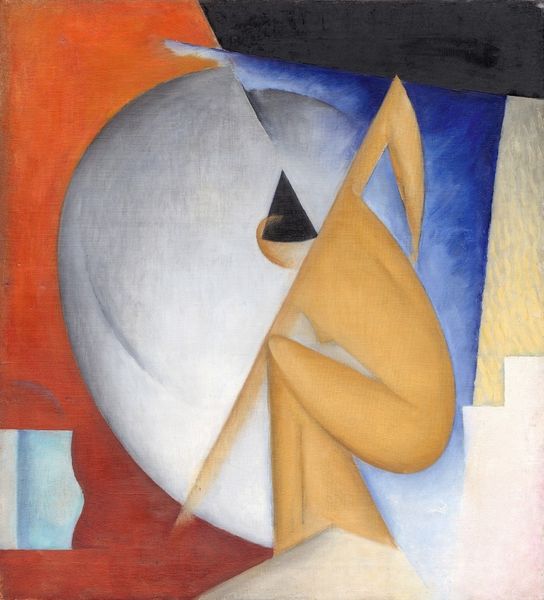
painting, oil-paint
#
cubism
#
painting
#
oil-paint
#
figuration
#
oil painting
#
neo expressionist
#
abstraction
#
nude
#
portrait art
#
modernism
Copyright: Gustave Buchet,Fair Use
Curator: Gustave Buchet’s “Frauenakt,” created in 1930 using oil paint, immediately strikes me as an exercise in geometric simplification of the female form, influenced by cubism and early modernism. Editor: It feels melancholic, almost muted. The color palette of browns, grays, and blacks is heavy. There's an almost statue-like quality that distances the viewer. Does it symbolize the alienation and objectification of the female body in early 20th century society? Curator: That's a compelling perspective! Considering the social context of the interwar period, the flattened and angular depiction of the nude female body could be interpreted as a critique of traditional patriarchal representations and beauty standards. It's almost a deconstruction of the male gaze through abstraction. Editor: Looking closely, the artist included some recurring symbols, which seem to draw from antiquity and which would allow the viewers to instantly recall particular aspects from our culture. The orb floating adjacent to the figure's chest immediately draws the eye, and might reflect the desire for immortality, perfection, and totality, but placed near the bosom can that meaning possibly shift to the erotic instead? Curator: Indeed, the placement of this single object draws one's focus to the corporeal. Considering this painting engages cubism, we need to consider this motif and its intersection with representation itself. Does that orb represent a "wholeness" or sense of potential related to identity, especially to gender identity during this historical moment? And how would we factor in other possible philosophical approaches like surrealism, which also focuses on symbols? Editor: I appreciate the point you make concerning the possible intersections with surrealism; yet, here it feels as though this is something else, rooted less in the unconscious than in conscious manipulation of signifiers. Its muted tones do not lend it that vibrant or rebellious air as one might find elsewhere. Curator: Perhaps Buchet sought to navigate the established language of nude portraiture to depict the changing identities and roles of women at the turn of the century. We could further examine its influences in relation to early 20th century cultural shifts. Editor: Ultimately, this image will remain stuck in my mind due to its heavy yet curious aura, that quiet yet strange quality about it. Curator: Agreed; it’s certainly a piece that demands we question the established aesthetic frameworks and the position of women within them.
Comments
No comments
Be the first to comment and join the conversation on the ultimate creative platform.

